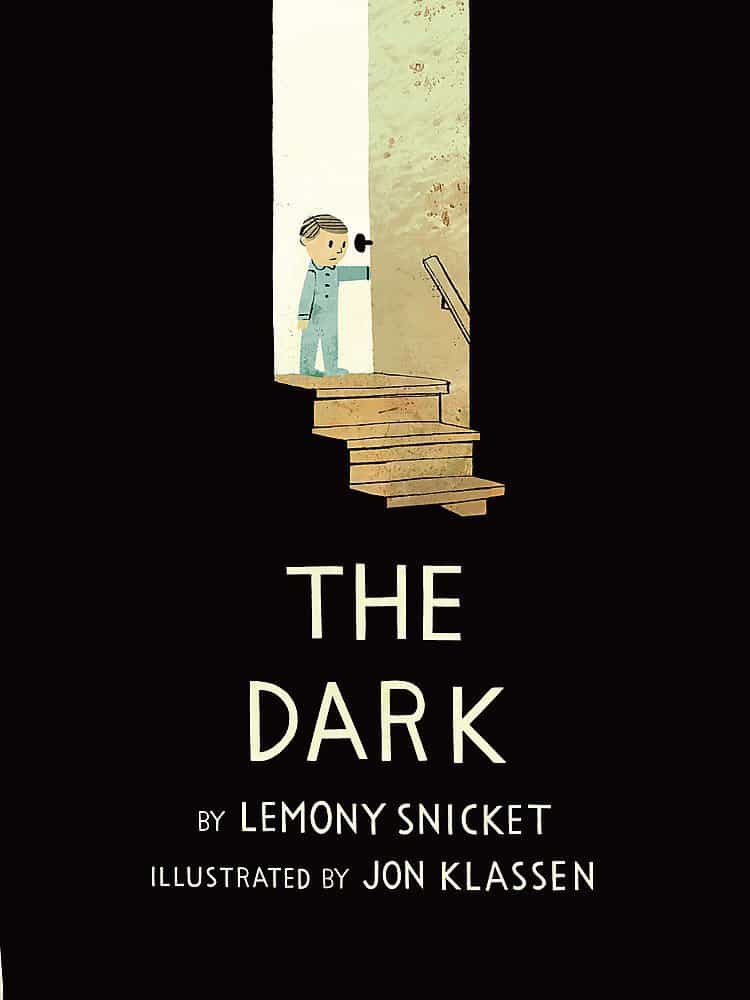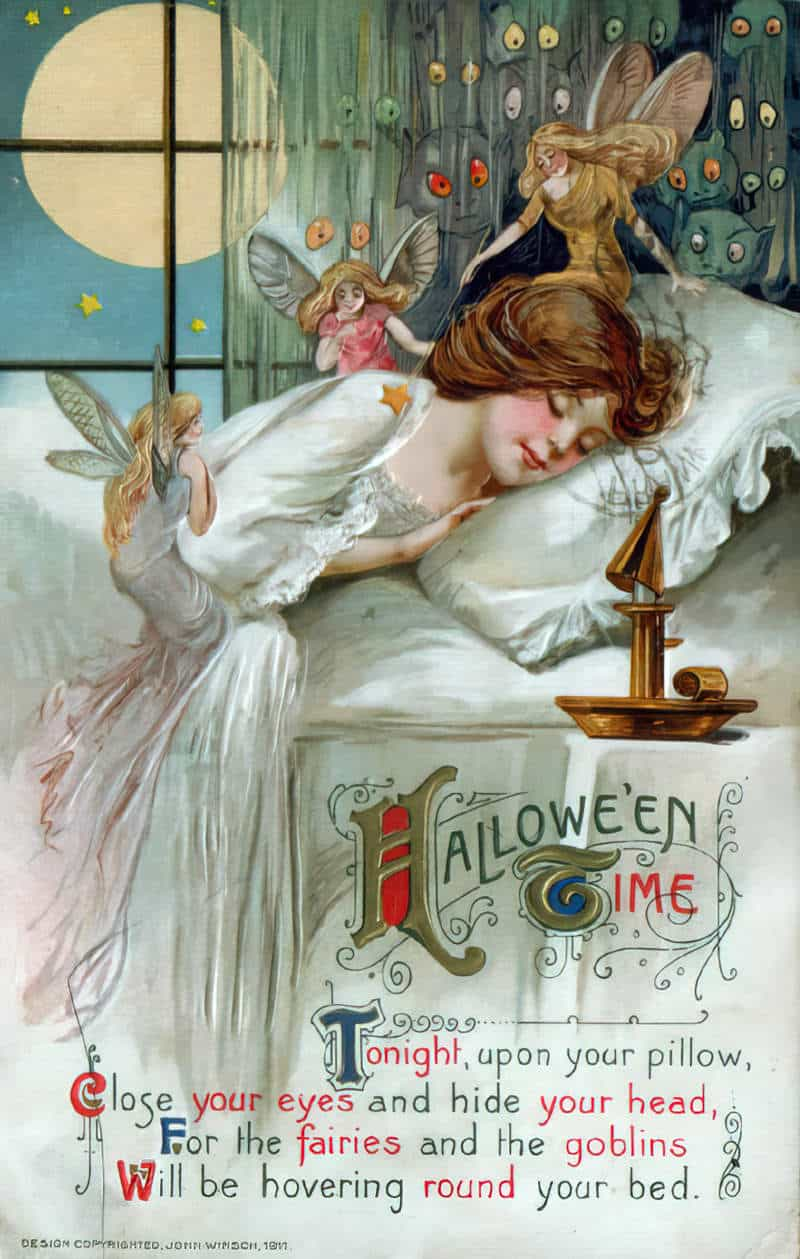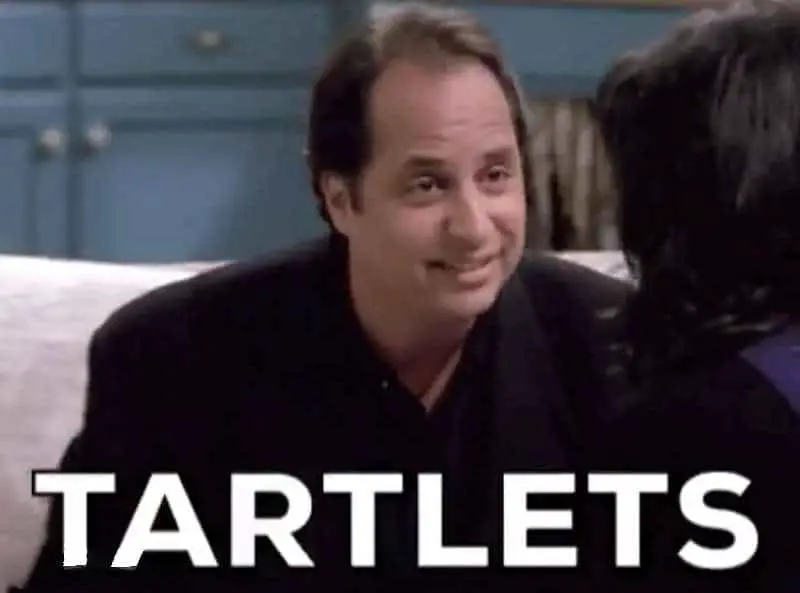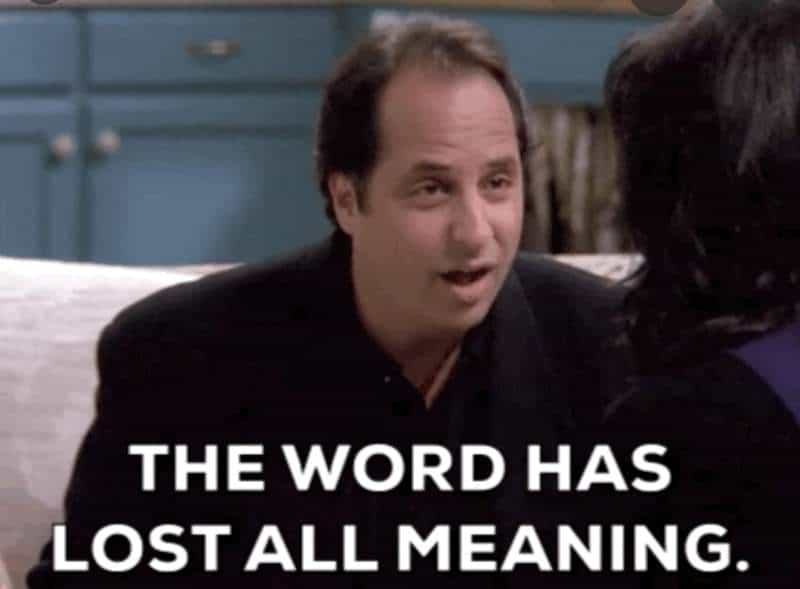**UPDATE LATE 2024**
Neil Gaiman is an abuser.
If this is news to you and you’re skeptical, here is a link roundup.
Tortoise was the first (semi) mainstream outlet to give voice to one of Gaiman’s victims. Unfortunately, Tortoise is funded and owned by a notorious anti-trans bigot, so even though I listened to the series and the individuals involved did a great job, I don’t want to help promote bigotry.
“Click Clack the Rattle Bag” is a very short story by British author Neil Gaiman. The author first published it via Audible on October 31, 2012, as part of All Hallow’s Read. Gaiman started this tradition to encourage people to give and share spooky books on Halloween.
The story has since been published in various collections of Gaiman’s works.
If you’d like to write your own urban legend, especially a subverted one, “Click Clack the Rattle Bag” is an excellent mentor text. The urban legend basis of this story isn’t entirely clear, and that’s the beauty of it, actually.
DISCUSSION QUESTIONS
- Think back to your early childhood. Did adults tell you stories about monsters, or goblin/fairy creatures who would peer through the window? What was the function of these stories, about some creature who could see your every move?
- Considering your own experience (if any), do you think stories about monsters help with childhood fear? Or do you think that stories about monsters only serve to scare kids unnecessarily by putting the idea of monsters in a young child’s head? What does Neil Gaiman’s child character have to say about this?
- Irony: a meaningful gap between expectation and outcome. What is the irony of this short story?
- “Click clack” is an example of what kind of language (starting with the letter ‘o’)? What other vocabulary in this story mimics sounds — and feelings — from the real world?
- What is the word for vocabulary that someone makes up, de novo, like this young boy in Neil Gaiman’s story?
- Aside from not yet knowing English very well, what other reason explains why the young boy can’t describe in words what he’s hearing?
- Do you think, in general, that children notice things adults don’t?
- According to the young boy in this story, Click-clacks abduct you if you [what]? Can you think of other stories, perhaps from fairy tale and folklore, in which characters are punished for the same ‘crime’?
- Why do you think so many of us, especially as children, are scared of the dark? Propose more than one reason.
- Have you ever felt sure you heard something specific and supernatural, but it turned out to be just a regular sound? For example, a primary school teacher told our class once that he could swear he heard the rotary clothesline in his yard calling his name in the wind as it spun slowly: “Alan! Alan!” (I have no idea why I remember that.) My own example: As a pre-schooler pressing one ear to the pillow at night I heard blood pulsating, but I believed it was slow and heavy footsteps making their way up the gravel driveway. For some reason I can’t explain, this was actually calming.
- What various horror tropes has Neil Gaiman utilised in this short Hallowe’en story?
- If we consider this short story a subversion of “The Babysitter” urban legend, in which ways has Gaiman subverted (changed) our expectations?
SETTING OF “CLICK CLACK THE RATTLE BAG”
PERIOD
In the late 1980s when I was about 12, a friend of mine tried to dissolve one of her baby teeth in a small glass of Coca-Cola. Obviously it didn’t work, even though she left it in the glass for at least a week. But back then, it was widely circulated that coke was even worse for teeth than it actually is.
The Internet was a great thing, in some ways. Back in the 1980s and 90s, adults could tell you any damn thing and you have little choice but to believe it. Even if you sensed it wasn’t true, you had to just sit with ambiguity.
“Click-Clack the Rattlebag” is a 2021 short story, and I imagine it set around then.
DURATION
This story is basically isochronical, meaning however long it took you to read it, that’s the in-world pacing of it.
LOCATION
Somewhere in the English speaking world. England is full of these old houses. There are a number of them in the USA too, I believe. I don’t imagine this story taking place here in Australia, or in my home country of New Zealand — the colonised history is just not that old. Settlers just don’t have those really old houses.
ARENA
The entire story happens inside a house, starting in the cosy kitchen, then moving us upstairs into the scary bedroom.
MANMADE SPACES
A classic spooky house — a dream house with an upstairs, a downstairs, and no doubt an unspoken basement as well. Since this is such an archetypal setting, Neil Gaiman doesn’t spend much time at all describing it.
LANGUAGE USE IN “CLICK CLACK THE RATTLE BAG”
KID SPEAK
The younger boy of Neil Gaiman’s story, though precocious, is too young to have acquired a vocabulary to describe what he’s seen. He can think if ‘nest’ but needs help with ‘lair’. A neologism is a newly coined word, phrase, or expression that has not yet gained widespread acceptance in the language. Neologisms can be created for various reasons: to fill a lexical gap, to express a new concept, or simply to be creative.
He makes up the word ‘ishy’ to describe how someone feels inside after a Click-Clack monster bites them.
The boy makes up this word because there is no word in English to describe that exact feeling. Is that because monsters aren’t real? Or is it because adults refuse to admit that they’re real, and so they have left a lexical gap wide open, ready to be filled by a child — the only category of person who admits what that feels like?
ONOMATOPOEIA
There are various different categories of mimetic words. Japanese language is famously rich in mimetic language and is a great language to study to understand all the different ways in which words can convey not just how something sounds, but how something collectively feels. That said, even English speakers can get a handle on it.
In English, “Click Clack” sounds like a switch being turned on and off. Japanese speakers call this type of mimesis ‘giongo’. English speakers are stuck with the ridiculously difficult to spell ‘onomatopoeia’. (Remember it has four ‘o’s and you’ll get there eventually.)
Neil Gaiman’s story offers other examples aside from click-clack: rattle, slammy
In contrast, a word like ‘shake’ simply feels like shaking. But we can’t explain how or why. (There are no doubt sophisticated neurolinguistic reasons for this.) Shaking does often make a sound, depending on what’s being shook, and in what kind of container, but ‘shake’ is not a sound which mimics real life.
A word like ‘goo’ is an even better example of a ‘feeling word’ because goo is completely silent. Instead, the word ‘goo’ offers the feel of goo. Goop, ooze, ick… Japanese speakers call these words ‘gitaigo’. English speakers mostly don’t think of gitaigo as mimetic words. For instance, in this story Neil Gaiman uses the word ‘tousle’. The big boy tousles the younger boy’s hair. That’s just a word, right? But someone made up that word. For some reason it caught on. But when you really think about it, the word ‘tousle’ feels right.
STORY STRUCTURE OF “CLICK CLACK THE RATTLE BAG”
SHORTCOMING
The characters in “Click Clack the Rattle Bag” appear ‘on stage’ without backstory (in statu nascendi, as if they’ve just been born). Eventually we work out how they are related. Unusually, the older character is not a father (as I originally assumed) but Neil Gaiman has done something a bit more original: This is the big sister’s boyfriend putting the kid to bed. This is a rare example of a young man performing childcare.
In traditional Hallowe’en versions, a teenage girl is in a house alone on babysitting duties. A boyfriend arrives; the two initiate sex. But they are being watched. They are roundly punished for their amoral transgression, oftentimes by death.
(See: Urban Legend Analysis: The Babysitter.)
A SUBVERSION OF THE BABYSITTING URBAN LEGEND
Gaiman has completely inverted this stale trope. This boyfriend isn’t interested in sex (at least, not at this very minute, though we can assume that’s why he might have come round). But this sex won’t be the dangerous kind. We see he is a caring, fatherly, responsible figure. While this young man may be trying to impress his newish girlfriend by calming her jittery little brother before bedtime, he is genuinely empathetic. There’s no overt Bad Man in this story.
“Click Clack the Rattlebag” is an example of genre irony. But there are other ironies in this story: The big comic irony is that the little boy has calmed himself down by telling a scary story (getting it off his chest) but he’s managed to give the big boy the creeps, so now the big boy is staring into the darkness wondering what’s coming next.
ABSENT CHARACTERS
Note that the girlfriend/big sister is temporarily absent but Neil Gaiman doesn’t feel the need to tell us where she is. When we first start learning how to spin stories, new writers tend to have a wide cast in mind, yet stories begin with a scene which only includes a subset of them.
A common writing mistake: Trying to explain away where the other cast members are in the opening scene, before the readers have started to wonder. No one cares at this point. Explaining where the sister is would only slow the narrative drive, and Gaiman understands this.
When writing stories about children, it’s especially tempting to explain where a child’s parents are. But actually, readers don’t care, because we don’t wonder unless the writer leads us to wondering. Eventually parental absence will need explaining if the parents in a children’s story are unusually absent, with emphasis on eventually. Readers are especially conditioned to not wonder where mothers are, because dead mothers in children’s literature are the norm. (Especially in American children’s literature.)
In “Click Clack the Rattlebag”, the big sister character is the absent mother archetype and I bet you never once wondered where she was while reading this story. Neil Gaiman simply tells us she’s out, and only later explains that she’s out getting liquor and Indian takeaway, which is probably what you would have assumed.
FEAR OF THE DARK
Humans are up and about during the day, so of course our vision has evolved to utilise sunlight. We are diurnal, not nocturnal. We cannot see well in the dark, so anything might lurk just around the corner.
Beyond that, humans have the amazing ability to make things up. We populate every nook and cranny with fairies and goblins. Likewise, earlier humans believed the darkness was a thing in its own right, rather than simply an absence of light.
For more on that see: Symbolism of Black, Darkness and Night.
AUDITORY HALLUCINATIONS
Hallucination: perceiving something not present. The sensory experience is not real, but you experience it as real.
“Click Clack the Rattle Bag” features auditory hallucination. If you’ve ever spent the night in an unfamiliar place you’ll be aware of hearing all sorts of sounds which you’d eventually learn to ignore once you become comfortable in your new space. The little boy was hearing the sounds of a new house settling.
But because he was such a vivid storyteller, now the older boy has started to hear things which perhaps aren’t even there.
Take a listen to the gadget below as it says “GREEN NEEDLE”.
GREEN NEEDLE
Now listen to the following gadget as it says “BRAINSTORM”.
BRAINSTORM
Yes, those are the exact same videos and the exact same sounds.
This basic experiment serves to demonstrate how our perceptions are a combination of what our senses sense and what our brain anticipates.
The little boy of this story has primed the older one to hear a horrible monster lurking in the dark, and so that is exactly what he hears. We are all prone to it; this is how human brains works.
Now, think back to the gitaigo — those words which sound like something even though there is no sound. Goo. Tousle.
The ability to imagine sounds where sounds are not is highly adaptive when it comes to acquiring human language. If we didn’t have this facility, learning to speak would be far more difficult. Perhaps impossible. (Psychologist Heinz Werner argued against the prevailing wisdom that the word-referent link is arbitrary and I happen to agree with him on this. There’s no way that ‘ooze’ just happens to mean ‘ooze’.)
For more on hallucinations, see this post.
Reasons you might not have slept good last night:
@steinekin 9:50 AM · Jul 13, 2021
- Stress
- Anxiety
- Your 2y old pointing & crying at 3am suddenly to a dark corner saying “MONSTER” and without your glasses you freak out too b/c the 158446 plants your wife has in the corner looks scary as hell in the dark

DESIRE
If the older boy wants to impress his girlfriend, the little brother character wants to go to bed and feel safe. Also, we can assume he’s enjoying the presence of a big-brother figure in his life.
The little guy wants to impress his sister’s boyfriend by showing off all the things he knows (and what he thinks he knows).
(The older boy is empathetic enough not to humiliate the little boy with a correction about the dissolving teeth.)
OPPONENT
The surprise at the end: The young boy is revealed as the opponent of the big boy, because he’s unwittingly given him the creeps.
But for the bulk of the narrative, the opponent of this story is The Dark, and creatures which may emerge from it at any moment to abduct children and torture them. (It is always taken for granted in these stories that monsters crave human children. We’ve not told what monsters might want with them.)
Fear of the dark is explored frequently across children’s literature, especially in picture books. No surprise there. One fairly contemporary hit publication is The Dark by Lemony Snicket, illustrated by Jon Klassen.
In fact, I recommend (re)reading that picture book as a companion to “Click Clack the Rattle Bag” because this story could easily take place in that house.

PLAN
The young boy’s subconscious plan: To engage his sister’s boyfriend in conversation and intrigue him with a story so that the boyfriend will happily take him all the way up to bed and then stay with him until he falls asleep.
THE BIG STRUGGLE
The little boy is such a good storyteller that, lying there in the dark, even the older boy starts to wonder if there might be something lurking in the dark.
HORROR TROPES
- the dark interior of an unfamiliar house
- on the edge of town, that liminal space between civilisation and nature
- threadbare carpet on the stairs suggesting many previous inhabitants who may still lurk
- a bright moon outside
- casting shadows on the walls
ANAGNORISIS
Perhaps the older boy hasn’t been paying enough attention.
This is the moral of many a scary fairy tale: Pay attention of the X will get you.
Children are commonly believed to be more perceptive than adults. It is common knowledge (in stories, at least) that lose the ability to notice details in our environment.
THE PERCEPTIVE CHILD TROPE
There is solid scientific reasoning behind this trope, which has a decent amount of truth to it. A really interesting person working in the area of child brain development is Alison Gopnik.
Alice Munro’s short story “Images” is an excellent literary example of how a very young child’s brain hones in on environmental details, whereas adults have ‘pruned’ brains which allows us to see the bigger picture. (Neurodivergent brains experience neural pruning differently.) In my analysis of Munro’s short story I have some links to podcasts where Alison Gopnik explains how this all works.
For a picture book example of how children lose the ability to see things as they come of age, Shaun Tan’s The Lost Thing is a standout example. The “Lost Thing” is a steampunk metal creature which walks among the crowds of a city, but the title also refers to a child’s “Lost Ability” to notice. Eventually he is staring at the TV just like his parents do, seeing nothing unique about the fascinating world around him.
This idea is seen in folklore and fairy tale from all over the world. I had Wee Willy Winky. Many Christian cultures have Santa, or that creepy Elf on the Shelf. Scandinavia has Tomten tales, and so on.

“The Erl-king” is a creepy example from folklore written (as a ballad by Goethe) for adults. If the father had trusted his son’s senses that night, things would have turned out differently. (Note that Angela Carter subverted this story, along with many others after she finished the frustrating job of translating a whole bunch of misogynistic fairy tales one time.)
Even across modern storytelling, characters are roundly rewarded for their perspicacity. The message is always this: Remain vigilant, nobody can sneak up on you.
NEW SITUATION
The older boy revisits his own boyhood by lying in bed with a precocious and articulate little boy. He probably waits until the kid falls asleep before going back downstairs. Or maybe he waits for his girlfriend to come back. He’ll hear the front door slam.
EXTRAPOLATED ENDING
Nothing in this story promises supernatural presence. The reader is left to wonder “What if?”
The reader is equally left to imagine the little boy falls asleep in his new house and the boyfriend joins his girlfriend elsewhere in the spooky house where they and their friends will enjoy the rest of their evening uninterrupted.
RESONANCE
We still have a dearth of stories in which young men are shown to take care of young boys in a safe, paternal way. The emphasis remains very much on the monotropic interest of young men in sex, which means there’s a disproportionate number of predators.
Young men need to see more masculine childcare in stories, partly so that the job of looking after children stops falling so heavily on the shoulders of women.
FOR FURTHER INVESTIGATION
Some time ago I wrote my own subversion of “The Babysitter” urban legend, which annoys me for feminist related reasons. Namely, babysitters are almost always girls, and the pay gap between men and women starts from the teenage years. Babysitting is considered a ‘non job’ for girls, because girls are thought to be naturally interested in children, so people justify underpayment of girls by thinking of their babysitting gig as a playdate.
Read my feminist subversion of “The Babysitter” for free.
SEMANTIC SATIATION
I believe Neil Gaiman’s “Click-Clack the Rattlebag” is about the power of auditory hallucination, but there’s a sort of inverse phenomenon which human brains also experience called semantic satiation. Auditory hallucinations are the brain’s attempt at making the unfamiliar make sense. But semantic satiation is when something familiar starts to not make sense. You hear a word repeatedly, it turns to gibberish.


There’s a similar phenomenon which applies to the written word.
Perhaps you’ve experienced orthographic satiation, too. That’s when writing starts to not make sense the longer you stare at it on the page. (Orthographic means having to do with spelling.)
If you write an East Asian language like Chinese or Japanese, this phenomenon is more pronounced. Most of the study of orthographic satiation concerns Chinese.
Prolonged inspection of a Chinese character induces a feeling of uncertainty of the character… (2016)
But this also happens in English. For some reason, some words are more prone to this phenomenon than others. It’s not an entirely individualised phenomenon. Some words just look goofy and wrong:
- weird
- finger
- spider
(Personally, I have experienced this with the word ‘school’.)
Of course, the Germans have a word for it: Gestaltzerfall.
“A psychological phenomenon where delays in recognition are observed when a complex shape is stared at for a while as the shape seems to decompose into its constituting parts.”
Wikipedia
